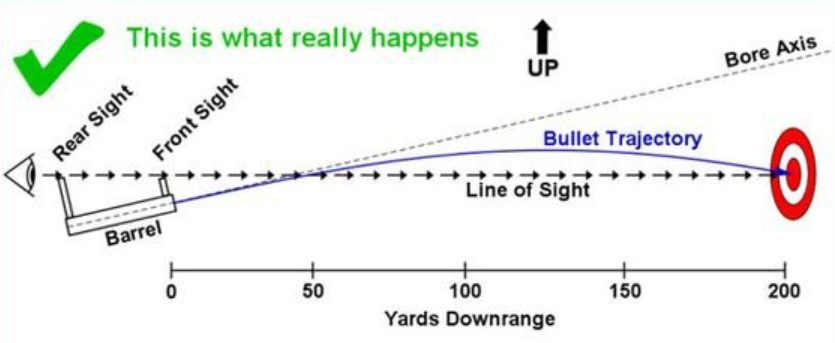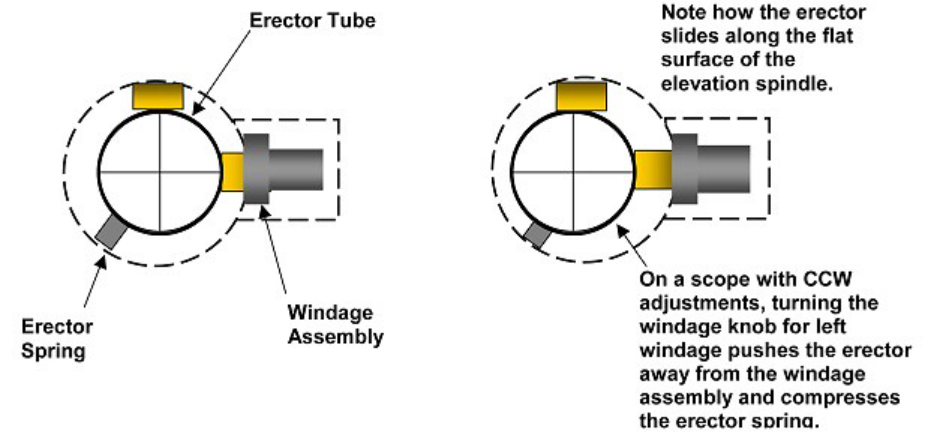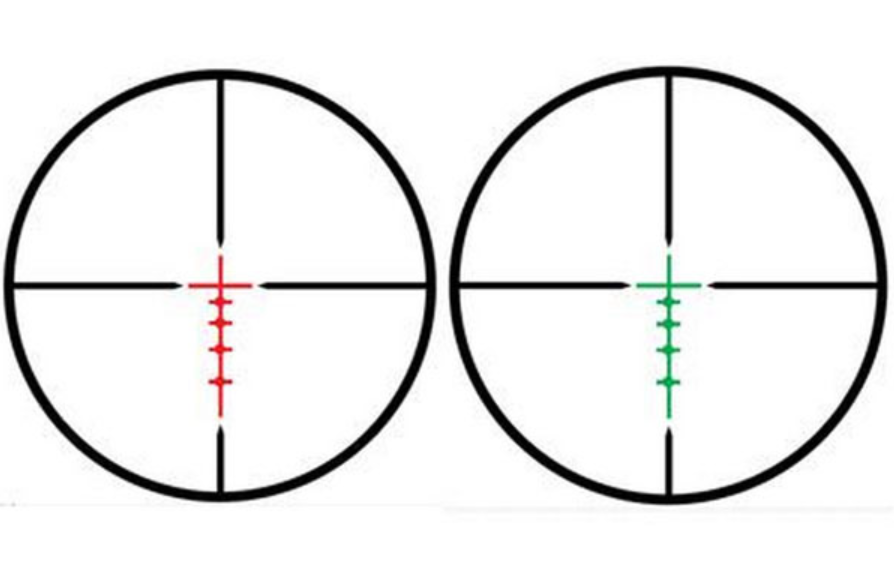
Are you looking to purchase a Rifle Scope yet have little understanding of what it all means?
Ade (Optics Warehouse) has debunked common terminology associated with Scopes and provided a basic breakdown to make it easier for you to understand.
There are many terms and phrases used when describing Rifle Scopes, including features, specifications, and functions.
Below is a common list of phrases and abbreviations useful to anyone new to the sport. Please note that descriptions may vary between manufacturers.
What does PARALLAX mean?
This feature allows the scope and image to become focused throughout its zoom/magnification range. The minimum distance it operates at determines its suitability. For example, 10-15 yards is common for Air Rifles and Rimfire ranges.
If a scope lacks a parallax feature, it’s usually fixed at 100 yards, mainly for Centrefire use.
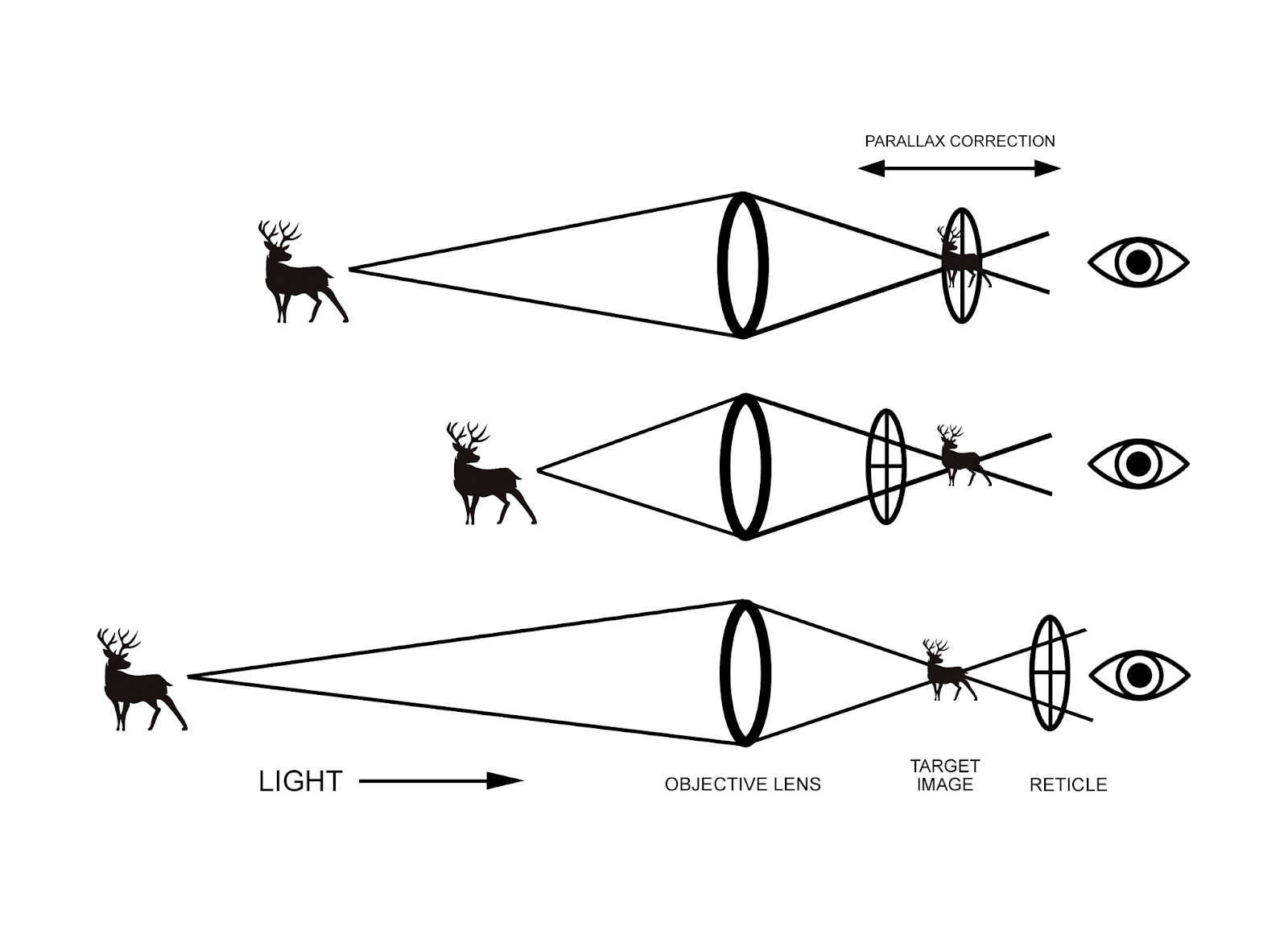
[Copyright: Correcting and Adjusting Rifle Scope Parallax, Levi Sopeland, www.outdoorsmans.com, 13.07.21]
The Parallax adjustment location varies by brand. Examples:
- SWFA: Rear or Side
- IOR: Mid or Side
- HAWKE: Front or Side
Note: Front AO is the same as Front Parallax/Focus Adjustment.
What does OBJECTIVE mean?
The objective refers to the front of the Rifle Scope. A 44mm, 50mm, or 56mm objective describes the size of the glass area. Be aware that the actual external measurement will exceed this, important when choosing mounting rings or covers.
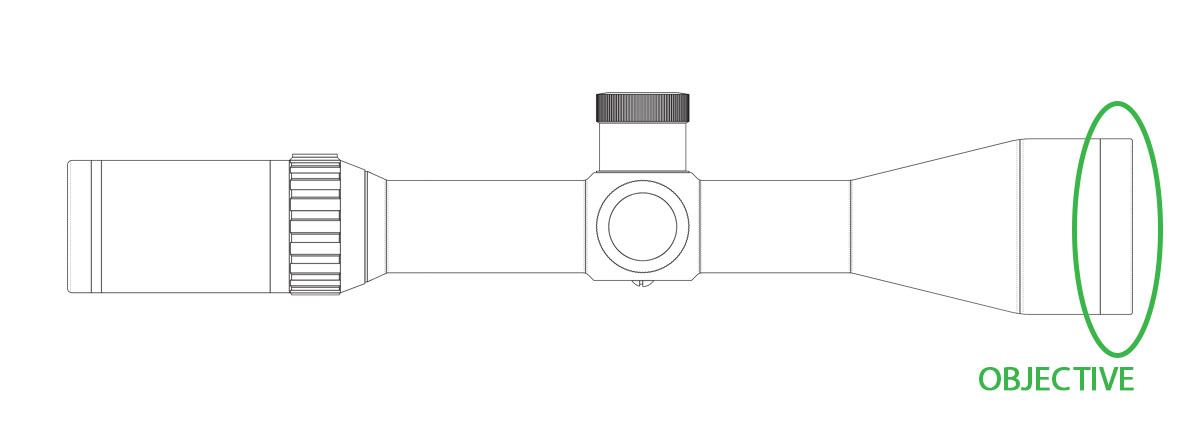
[Image: Objective]
What does OCULAR/EYEPIECE mean?
The ocular, or eyepiece, is the lens at the eye end of the scope. It typically includes a diopter adjustment to ensure a clear reticle image.
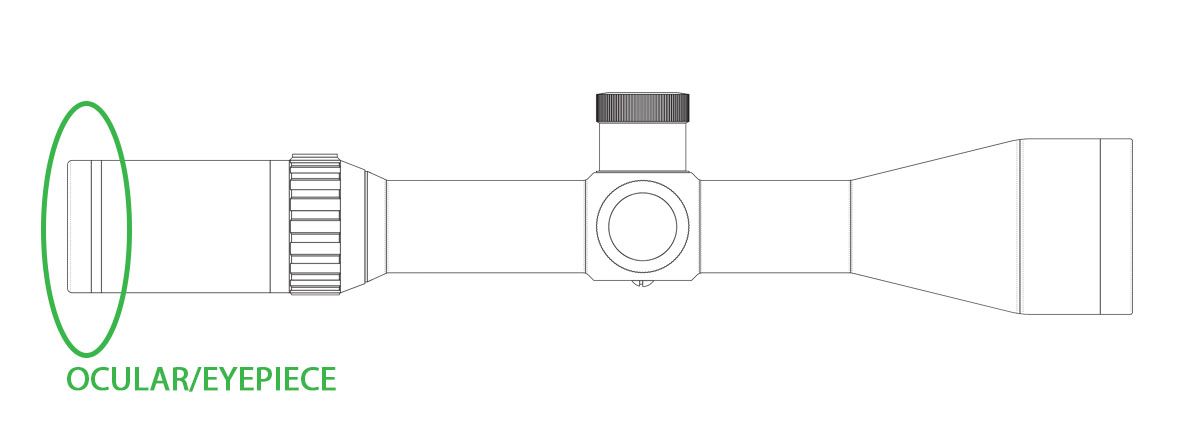
[Image: Ocular/Eyepiece]
What does EYE RELIEF mean?
Eye relief is the distance from your eye to the eyepiece. It varies by platform; long eye relief is common for pistol scopes, while Centrefire scopes have a few inches to prevent “Scope Eye” from recoil.
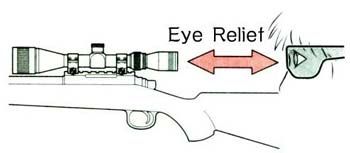
[Copyright: What is eye relief on a scope: All you need to know, Optics Bible, www.opticsbible.com]
What are TURRETS?
Turrets allow the user to adjust the scope’s elevation and windage. The top turret adjusts elevation, and the side turret adjusts windage. Turrets can be capped (low profile) or exposed (target turrets), the latter being more common on modern scopes.
CW = Clockwise, CCW = Counterclockwise.

[Image: Turrets]
What does MOA/MRAD mean?
These are the values turrets operate in. MOA is based on the imperial system (yards/inches), and MRAD uses the metric system (centimeters/meters).
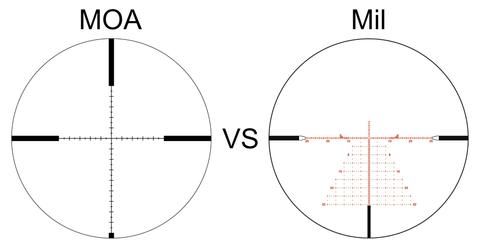
[Copyright: MOA vs MRAD: What is the Difference Between the Two?, www.xhunttargets.com, 13.01.21]
What does ELEVATION mean?
Elevation refers to the vertical axis of the reticle plane and the distance adjustments made to your chosen zero. The elevation turret sits on top of the scope.
[Copyright: Chris Everett, www.quora.com]
What does WINDAGE mean?
The word Windage is used with reference to the left-to-right, horizontal axis of the reticle. This is the control knob generally found on the right-hand side of the scope's center bell. Its job is to adjust the POI (Point of Impact) of the reticle - left or right - to meet with the weapon's zeroing distance.
[Image: Internal mechanism of setting Elevation. | Copyright: www.rimfirecentral.com]
What does ZEROING mean?
Zeroing is the collective term used to make adjustments using both turrets (windage and elevation) when mounting your scope for the first time. Although both turrets can and may be used for dialing in small adjustments in general day-to-day use.

[Copyright: www.shepherdscopes.com]
What is the MAIN TUBE?
This is the main tube that your ring mounts will attach to. This can vary - anything from 1 inch on older, cheaper scopes, up through to 30, 34, 35, 36, and 40mm.
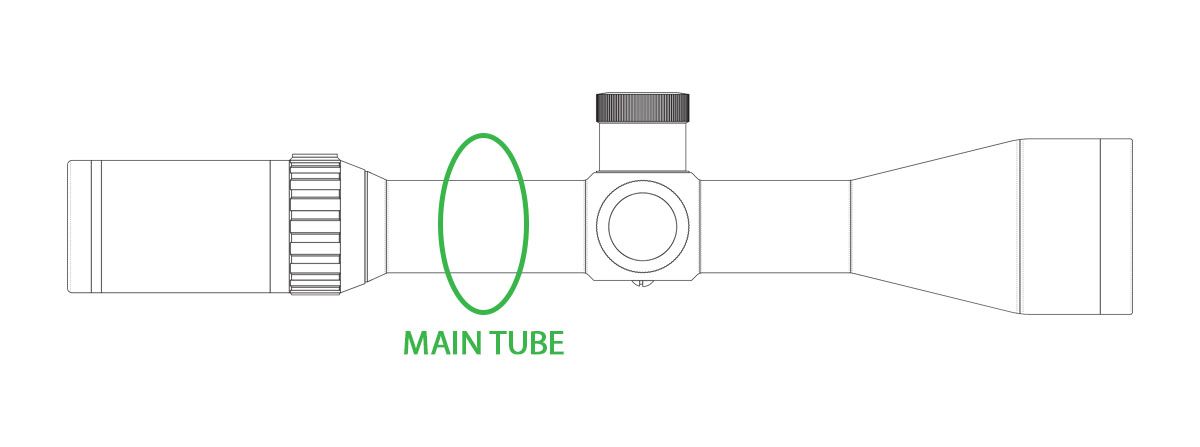
[Image: Main Tube]
Where is the ZOOM/MAG RING?
The zoom/mag ring is the mechanism that sits just in front of the ocular (eyepiece). This will only be found on a 'variable' power scope and allows you to change the magnification within its capability. Example: 3-9x40
Minimum magnification = 3x
Maximum magnification = 9x
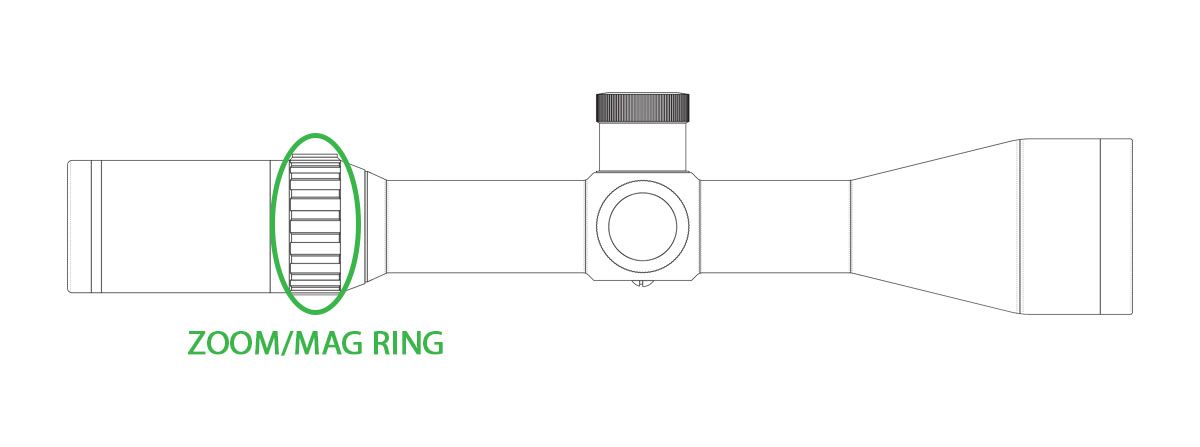
[Image: Zoom Mag/Ring]
What does ZEROSTOP mean?
ZeroStop is a mechanical function that some scopes have in the turret system. ZeroStop allows you, once your gun is zeroed, to set a physical stop in the turret travel, which would then allow you to return without fail to your original zero setting. This is useful if you lose your way with turret turns or if it gets moved inadvertently during transportation.
This is not to be confused with 'lockable' turrets, which means it has a form of locking the turret in position to stop it from getting inadvertently adjusted.
[Video: How To Set The Zero Stop On An IOR Rifle Scope. Copyright: Optics Warehouse]
What is ED/HD GLASS?
All rifle scopes have varying degrees of 'coatings' on the front lenses. This is used for clarity, light transmission, adjustment, water dispersion, etc., and can greatly change the optical quality of any scope. Extra dispersion, high definition (HD), rainguard, etc. Many terms can be used to describe the coatings and performance of the lenses. Every firm has its own terminology, but essentially all refer to the coatings on the lenses.
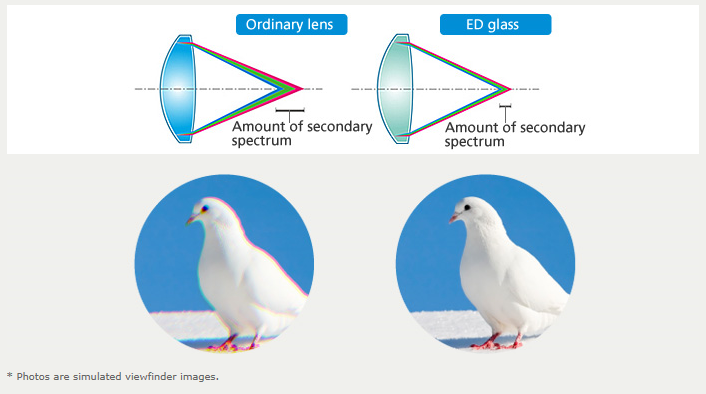
[Copyright: ED and HD Optics on a Budget, www.gearexpert.com]
What is a RETICLE?
Reticles come in many variants, from the most simple 'Mil Dot' and 'Duplex' to the very busy and fine target reticles such as the 'Horus'. They all do the same job of guiding your eye to the point of impact required and will have varying degrees of visual hold over values/references for the shooter to learn to their caliber and ballistics.
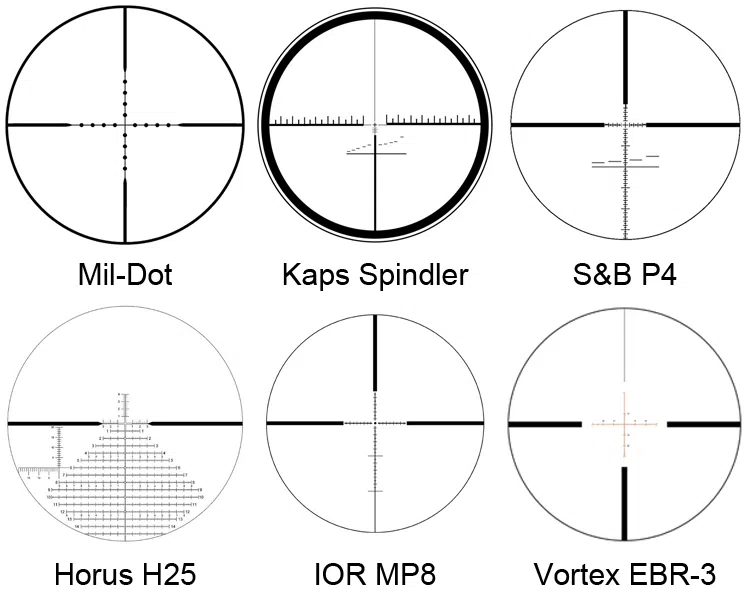
[Copyright: How to use Tactical reticles, Teodor Stimec www.optics-info.com]
What does ILLUMINATION mean?
This is the capability of the reticle you are looking at (through the scope) to in some way 'light up'. This may be a small portion, i.e., just the center dot, or all of it. The battery and controls for this are generally on the left-hand side of the scope, opposite the windage turret, and often combine with the side parallax feature, or on older scopes, can be on the eyepiece.
[Copyright: Rifle Scope Reviews 2015 | Best riflescopes under 200, www.bestriflescopereview.net]
What is the CENTRE BELL?
This is the middle of the rifle scope where the turrets, etc., are mounted and is at the heart of the scope.
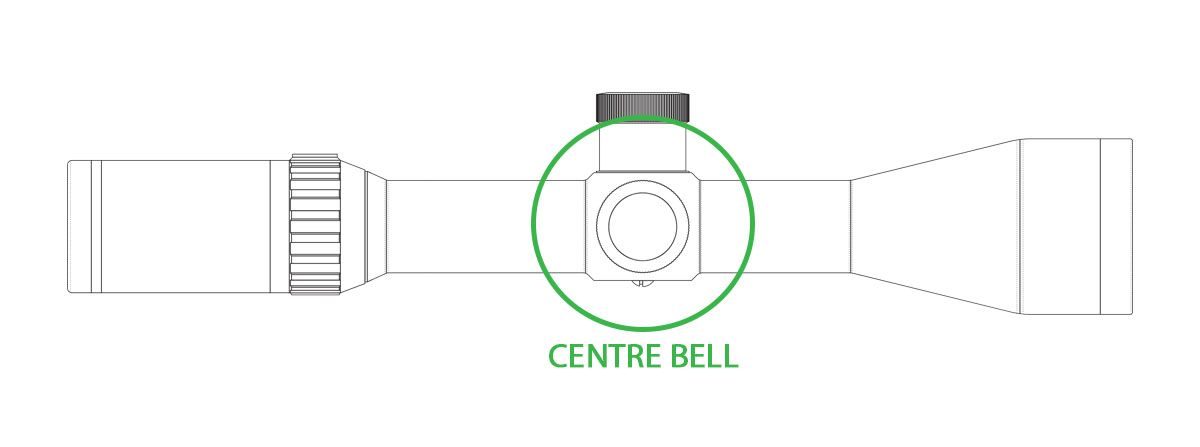
[Image: Centre Bell]
If you are still unsure about any of the lingo, feel free to email sales@opticswarehouse.co.uk where we'll be more than happy to help.















